Although Algonquin Park is noted for its abundant wildlife, most of us don’t put Hummingbirds on the list of creatures to look for in the park, however they are there every summer in abundance. Of the more than three hundred Hummingbird species found around the world, only one species is found in Ontario (and most of North America east of the Mississippi River) and that is the Ruby-throated Hummingbird.
Humming birds are an amazing example of God’s great design. Their primary wing feathers are connected to their bodies only by the shoulder joint which allows for the wings to rotate almost 180°. This results in their ability to hover motionless and they are also the only know bird that is capable of flying backwards. While hovering, their wings beat at approximately 55 beats per second. Muscles make up about 35% of their body weight and during late summer they double their body mass (up to about 7 grams) in preparation for a migration route that takes them more than five hundred miles, non-stop, across the Gulf of Mexico. A truly amazing feat!
Yesterday we spent the evening with friends enjoying diner at Arowhon Pines Resort in Algonquin Park and were able to take pictures of some of the many Ruby-throated Hummingbirds that frequent the feeders around the lodge. Normally when its raining and the light is not very nice, the camera gear gets left in the car, however sometimes it is worth the effort to take a few shots. All of the images in this post are of a male Ruby-throated Hummingbird. The male is distinguished by it ruby-red gorget (which the females lack) however the poor lighting conditions prevented the red feather iridescence from being prominently displayed.
Sitting in the rain.
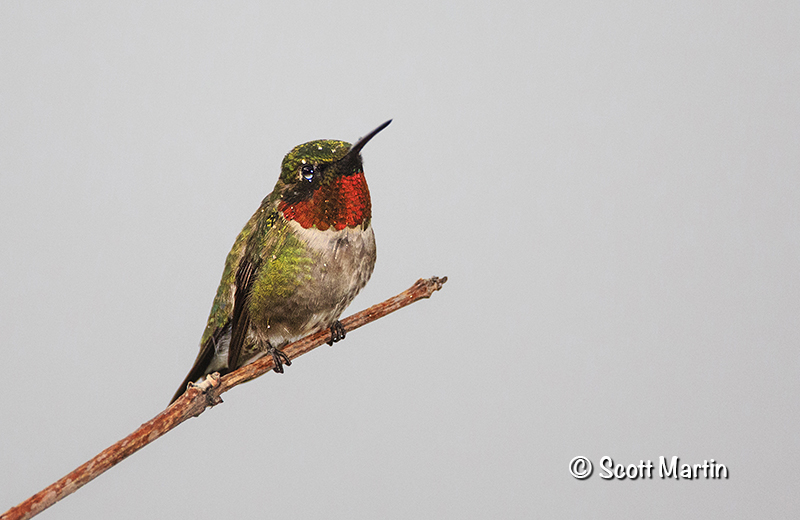
.
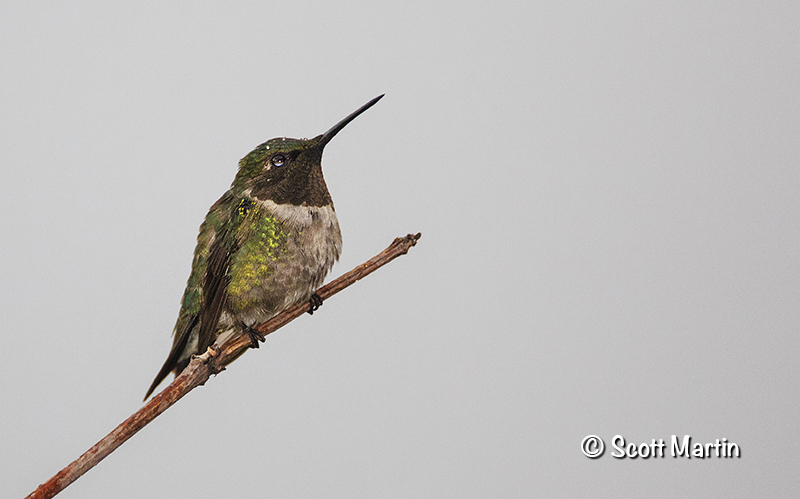
Shaking off the rain drops.
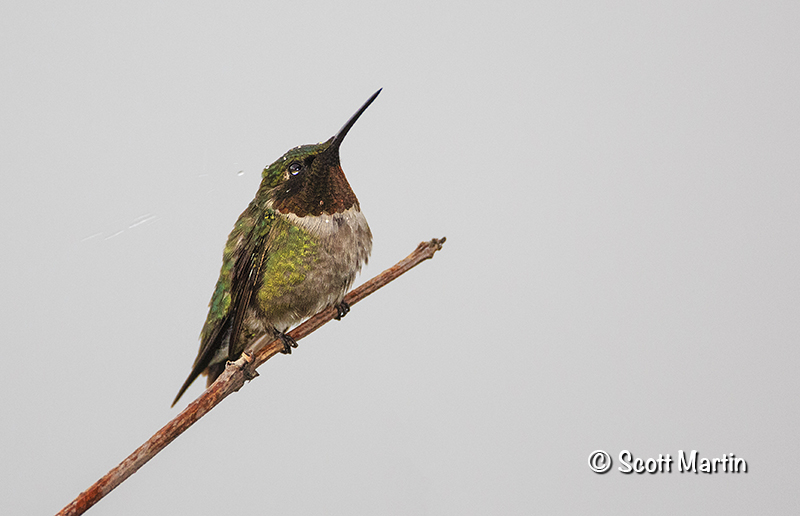
All puffed up for a portrait.
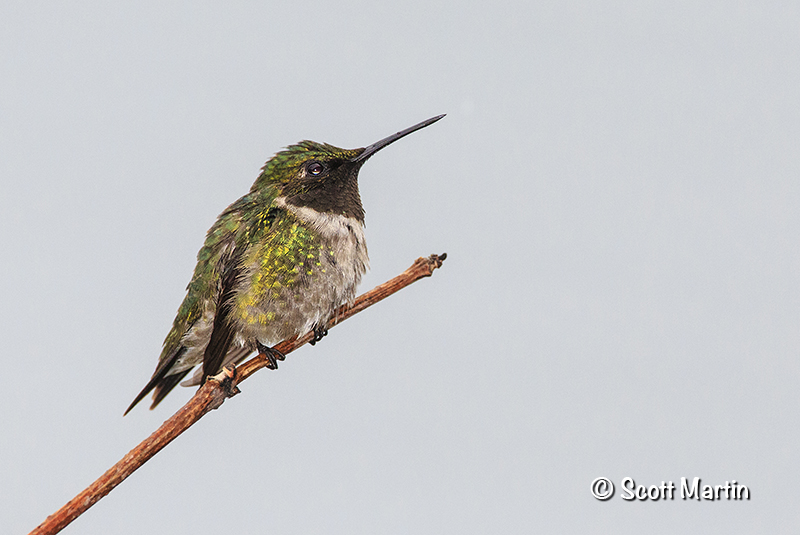
A final pose.
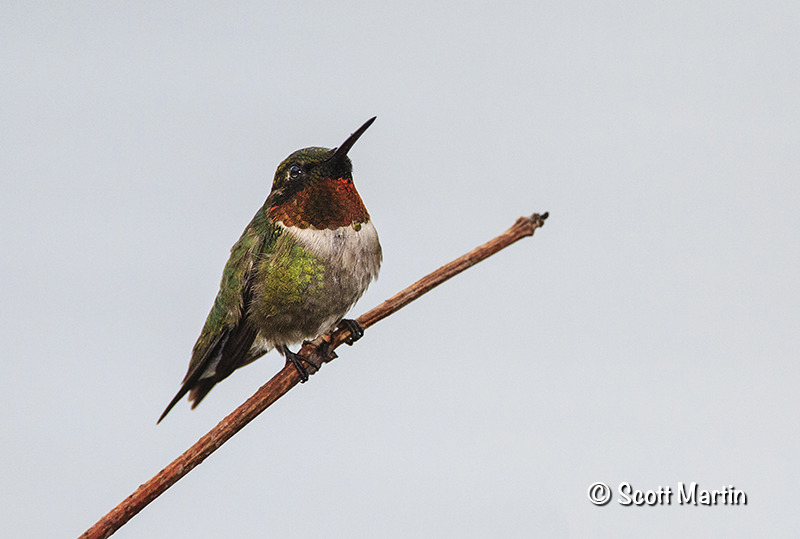
Recently I have been experimenting with taking video clips of birds in an effort to record some of their behavioural activities. There is a bigger than expected learning curve with everything involving video, however hopefully practice will improve both the quality of the video and the editing of it. In the mean time I trust they are of enough interest to warrant your viewing of these early attempts!
.
.
Other Hummingbird images can be seen in the Hummingbird Gallery.
All the images in this post were taken with a Canon 5D MkIII and 500/f4 lens plus a 1.4x TC.


These are very nice images Scott as per usual. It is nice that he sat and posed for you on the stick instead of the perch of the feeder.
Thanks Arni, it was a challenge in the poor light…..but I did manage a few video clips (that will take a while to edit) 🙂